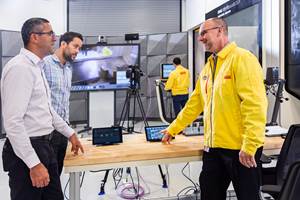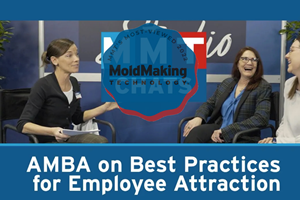The Specialized Approach
Editorial Advisory Board (EAB) Insight from Steve Rotman.
Throughout my 40-year career as a moldmaker, I have seen different approaches to mold building. One involves lead moldmakers managing a mold from start to finish, which can take 10 to 14 weeks. Another style uses specialists who remain focused on their expertise and only follow a mold for their particular skill set. The time period for this method varies, but rarely goes beyond two weeks.
At Ameritech, we employ the specialist approach, and it seems to be a win-win situation for our employees and the company. Everyone has become accustomed to a faster-paced environment without the fatigue that our longer, single-leader method used to produce. Employees seem fresher, more focused on time management and able to get the job out of their areas sooner. And the company benefits as well, as these employees begin to see their areas of expertise more clearly while searching for ways to reduce the overall cycle time for these particular areas of expertise.
Another advantage of this approach is that it enables the company to change the overall schedule of a complete mold build quickly and efficiently, helping to manage machine downtime, customer changes and requests for expedited deliveries. Our management team, comprised of the program manager/engineer, shopfloor manager and design engineer, retains complete control of the schedule, while the specialists only see the next 24 to 48 hours of the schedule. In this way, specialists are kept unaware of any issues or need to change, which allows them to maintain their current work speed and performance despite any shift that might be made in the overall schedule.
Staying on top of advances in fixturing, robot and workholding technology also plays a key role in the success of the specialist approach. Technology has been a game-changer within mold manufacturing, allowing faster change-overs and setup times, and longer spindle runtime capability. For example, the accuracy of new workholding devices helps return a workpiece to its exact position and blend to former cuts.
The specialized approach to mold building also offers benefits with regard to training. It allows for training and development in a teaching/tiered-skill system, which complements a high school apprenticeship program and creates an environment where students and employees can see their next goal or level of expertise. For example, at Ameritech, high school students start working with small components that do not directly impact actual molding areas on the tools. They learn to program and machine with smaller CNC mills, lathes and grinders. Next, they may work on mold bases, ejector plates and clamp plates—larger pieces that require more accurate machining and that could cause problems within a tool if they are not machined to specified tolerances.
The first step to implementing the specialist approach in any mold building operation is defining the specific areas or processes of a mold build and then developing those areas into specialty-staffed functions. Review the steps a lead moldmaker takes to complete a job, and then turn these steps into separate processes managed by a team of specialists instead. This team’s job is to produce the part exactly to the 3D CAD model provided by the engineering department. Specialists and engineering working together like this enables more time to be spent on engineering, which helps to minimize issues when the project hits final assembly. That is when everyone wins.
Related Content
How to Use Continuing Education to Remain Competitive in Moldmaking
Continued training helps moldmakers make tooling decisions and properly use the latest cutting tool to efficiently machine high-quality molds.
Read MoreHow to Improve Your Current Efficiency Rate
An alternative approach to taking on more EDM-intensive work when technology and personnel investment is not an option.
Read MoreMMT Chats: American Mold Builders Association on Best Practices for Employee Attraction and Hiring
MoldMaking Technology Editorial Director Christina Fuges sits down with AMBA’s Managing Director Kym Conis and the Director of Strategic Execution Rachael Pfenninger to discuss its Employee Attraction and Hiring Playbook and the Workforce Development Task Force. This episode is brought to you by ISCAR with New Ideas for Machining Intelligently.
Read MoreTackling a Mold Designer Shortage
Survey findings reveal a shortage of skilled mold designers and engineers in the moldmaking community, calling for intervention through educational programs and exploration of training alternatives while seeking input from those who have addressed the issue successfully.
Read MoreRead Next
Time-to-Market Strategizing
Editorial Advisory Board (EAB) Insight from Vic Baez.
Read MoreAre You a Moldmaker Considering 3D Printing? Consider the 3D Printing Workshop at NPE2024
Presentations will cover 3D printing for mold tooling, material innovation, product development, bridge production and full-scale, high-volume additive manufacturing.
Read More






















